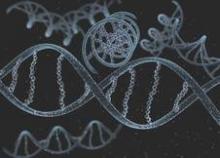Genetic alterations affecting phosphoinositide 3-kinase (PI3K) and fibroblast growth factor receptor (FGFR), and associated pathways, only minimally affected the efficacy of everolimus in patients with hormone receptor–positive (HR+), human epidermal growth factor receptor 2–negative (EGFR-) advanced breast cancer.
To determine whether everolimus yielded greater treatment benefits in tumors dependent on a hyperactive PI3K/mTOR pathway, progression-free survival (PFS) in the presence and absence of mutated PIK3CA (catalytic subunit of PI3K) was examined. Median PFS was longer for all patients with wild-type PIK3CA (catalytic subunit of PI3K); everolimus was associated with a slightly greater reduction in risk than placebo: the hazard ratio was 0.37 (95% CI, 0.25 to 0.55) for wild-type PIK3CA and 0.51 (95% CI, 0.34 to 0.77) for mutated. The everolimus benefit was greater in patients with exon-9 mutations (HR, 0.26; 95% CI, 0.12 to 0.54) than exon-20 mutations (HR, 0.56; 95% CI, 0.31 to 1.00).
The lack of an appreciable effect of activating mutations on everolimus benefit, “highlighted the oversimplification of both the hypothesis and the analytic method of pooling all genetic alterations in this frequently mutated gene or hyperactive pathway,” wrote Dr. Gabriel N. Hortobagyi, professor of medicine, University of Texas MD Anderson Cancer Center, Houston, and his colleagues (J Clin Oncol. 2015 Oct. 26. doi:10.1200/JCO.2014.60.1971).
The data showed that PIK3CA exon-9 mutations were associated with more benefit than were exon-20 mutations, pointing to the importance of clinically evaluating mutations in terms of their specific functional effects, the investigators said.
Similar to observations with the PI3K pathway, genetic alterations in FGFR and cell-cycle control genes had minimal effect on PFS gains with everolimus.
The study also used NextGen sequencing to derive a contrast-induced nephropathy scoring system to assess the influence of chromosomal instability on everolimus benefit. Patients with low chromosomal instability (below the 75th percentile) derived a median PFS gain of 5.5 months with everolimus, compared with 1.5 months for patients with high chromosomal instability (above the 75th percentile). The effect of chromosomal instability on PFS was evident only in the everolimus arm, suggesting that tumors with lower chromosomal instability may derive greater benefit from the addition of everolimus.
Using data acquired from a medium-size cancer panel to measure chromosomal instability expands the utility of the NextGen sequencing data increasingly collected in oncology practice, Dr. Hortobagyi and his associates wrote.



